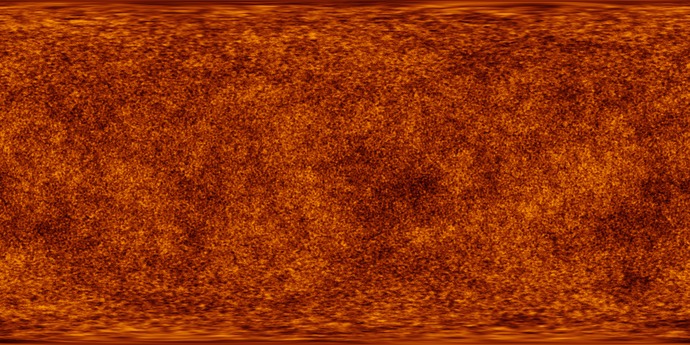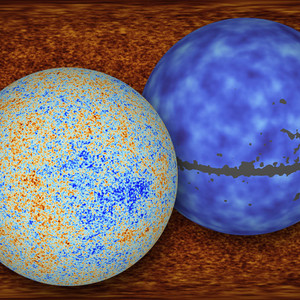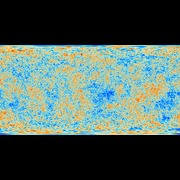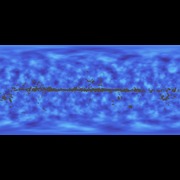About the Image
- Date
- April 16, 2013
- ID
- planck13-002b
- Type
- Observation
- Credit
- ESA and the Planck Collaboration
Planck's Cosmic Microwave Background Map (alt. color scheme)

This map shows the oldest light in our universe, as detected with the greatest precision yet by the Planck mission. The ancient light, called the cosmic microwave background, or CMB, was imprinted on the sky when the universe was 370,000 years old. It shows tiny temperature fluctuations that correspond to regions of slightly different densities, representing the seeds of all future structure: the stars and galaxies of today.
By analyzing the light patterns in this map, scientists are fine tuning what we know about the universe, including its origins, fate and basic components.
This map was constructed from an analysis of observations of the sky at wavelengths of light spanning 850 microns to 1 cm (353 GHz to 30 GHz). Additional observations spanning 350 to 550 microns (857 to 545 GHz) helped characterize foreground dust in the Milky Way, which was removed from the final CMB data shown here.
This view of the data is in an equirectangular projection suitable for projection onto a sphere, and is useful for full-dome presentations. The projection is in galactic coordinates with the galactic plane running horizontally along the midpoint of the image. Note that most graphics software will map images to the outside of a sphere; since this is the inside projection looking outwards the image should be flipped horizontally when used with such software.
Planck is a European Space Agency mission, with significant participation from NASA. NASA's Planck Project Office is based at NASA's Jet Propulsion Laboratory, Pasadena, Calif. JPL contributed mission-enabling technology for both of Planck's science instruments. European, Canadian and U.S. Planck scientists work together to analyze the Planck data.




